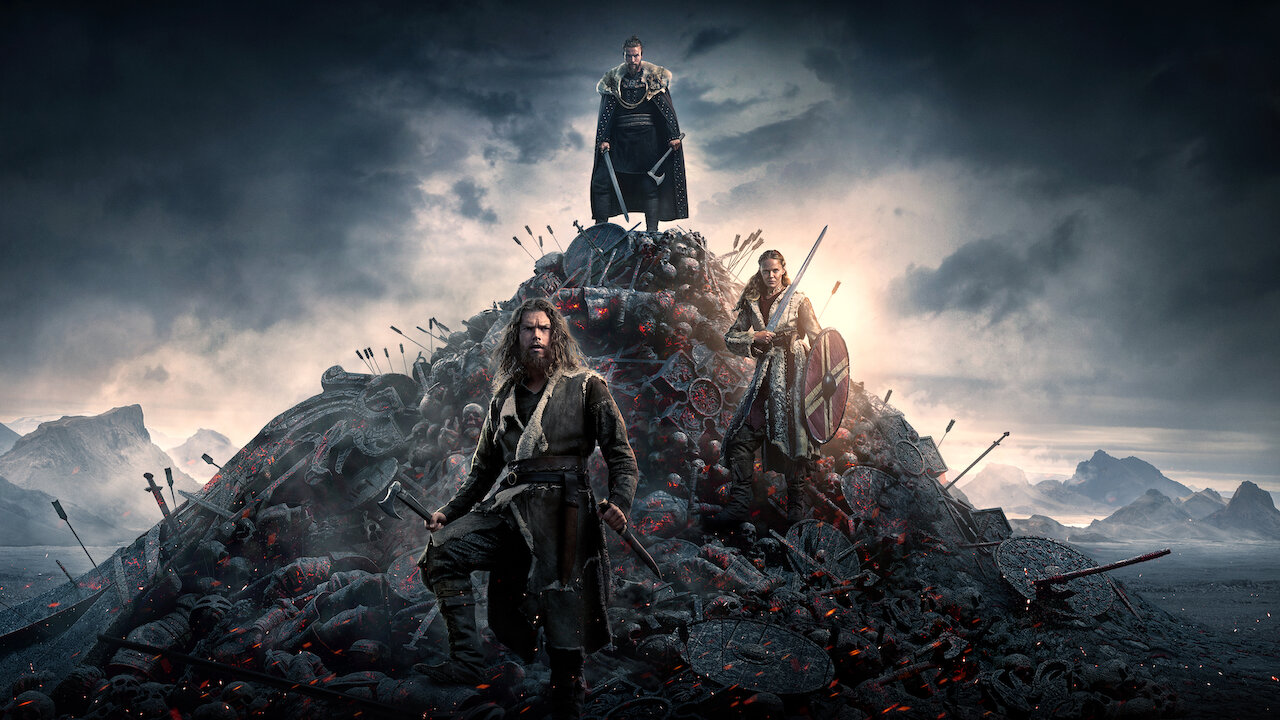What Did Valhalla Mean to the Vikings?
Hint: it was a whole lot better than Hel

(Content warning: sexual assault)
There’s a poignant line in Vikings: Valhalla episode 1. Freydis and Leif are overlooking the armies that are gathering to get revenge on King Aethelred II after his slaughter of Viking settlements in England the year before. Freydis is seeking her own revenge on a Christian who raped and mutilated her. Leif stopped her from killing him at the Kattegat harbor, knowing that she’d be killed in turn, but Freydis isn’t happy.
“You shouldn’t have stopped me in the harbor,” she says. “It would be done.”
“And you’d be dead,” Leif replies.
“Then I’d be in Valhalla with the other Einherjar,” she says, “feasting with Odin and the Gods.”
If you’ve read any Norse myths or seen any Thor movies, you may have a vague idea of what Valhalla is: a big feasting hall where warriors go after they die in glorious battle. But is that all there is to it? What is Valhalla in the original Norse lore, and what does Freydis mean by the Einherjar? Let’s dive in and see!
Norse Beliefs About the Afterlife
In ancient Norse cosmology, there were several realms where you might end up after you died. Helgafjell was one of the more pleasant ones, described as a holy mountain that contained a warm hearth where your life would more or less continue the way it had on Earth. Folkvanger was another scenic destination, where half of the warriors who’d died in battle would join the goddess Freya in a field or meadow.
Hel was another realm in the afterlife, which helped shape the Christian idea of Hell. The queen of Hel, also named Hel, was a fearsome creature with a body that was half alive and half dead, and her realm wasn’t much better. According to the Prose Edda, Hel contains “an emormous dwellling, with walls of immense height and huge gates. [Hel’s] hall is called Sprayed with Snowstorms, her dish is Hunger, her knife is Famine … The threshold over which people enter is a pitfall called Falling to Peril, her bed is named Sick Bed, and her bed curtains are named Gleaming Disaster.” Those who died of disease and old age went to Hel.
Valhalla and the Einherjar
Valhalla, on the other hand, is a majestic hall presided over by Odin himself. According to the Prose Edda, Odin sends valkyries to every battlefield to see which warriors die in combat. When warriors are slain, the valkyries choose half to take to Valhalla, leaving the other half for Freya in Folkvanger. Once there, the valkyries serve the fallen warriors they’ve chosen, “bringing drink and seeing to the tables and ale cups.” Those who die in battle are called Einherjar, or Odin’s adopted children. It’s clear that, for Viking warriors, reaching Valhalla wasn’t just a matter of securing a comfortable and honorable afterlife, but achieving union with Odin himself.
Here’s the catch, though. Valhalla isn’t just feasting and merriment until the end of time. Remember that Norse mythology ends with Ragnarok, or the apocalypse, and when Ragnarok begins, Odin calls up all the Einherjar to do battle with the frost giants and the legions of Hel. When you consider that one of Valhalla’s main activities is sparring and training, it becomes clear that Valhalla serves as a training ground for Odin’s final army. Perhaps that’s why only the bravest warriors are allowed in!
What Valhalla Could Mean in Vikings: Valhalla
We know right off the bat that the theme of Vikings: Valhalla is revenge. The Vikings are seeking revenge on the English for exterminating the Viking settlements in England, and Freydis is seeking revenge on the man who assaulted and raped her.
It’s significant that Freydis is the first character to mention Valhalla by name. One of the cruelest aspects of what she’s endured is the humiliation and sense of violation, which deals a massive blow to her dignity and sense of self. Compare that kind of degradation to the honorable deaths of the Einherjar, who are able to die standing and fighting. Freydis, having been knocked unconscious and tied down during her assault, has been robbed of the chance to defend herself. Attacking the man who assaulted her will, to her, put things back in balance.
We can also see this theme being played on a larger scale with the Vikings preparing to avenge the civilians who were killed in England. Having been taken by surprise, they, like Freydis, were unable to fight back with honor.
Will the Vikings succeed in avenging their fallen kin? How will Freydis handle the fallout from her actions? Find out on Netflix, where 8 episodes of Vikings: Valhalla season 1 are now streaming!
(image: Netflix)
Have a tip we should know? tips@themarysue.com